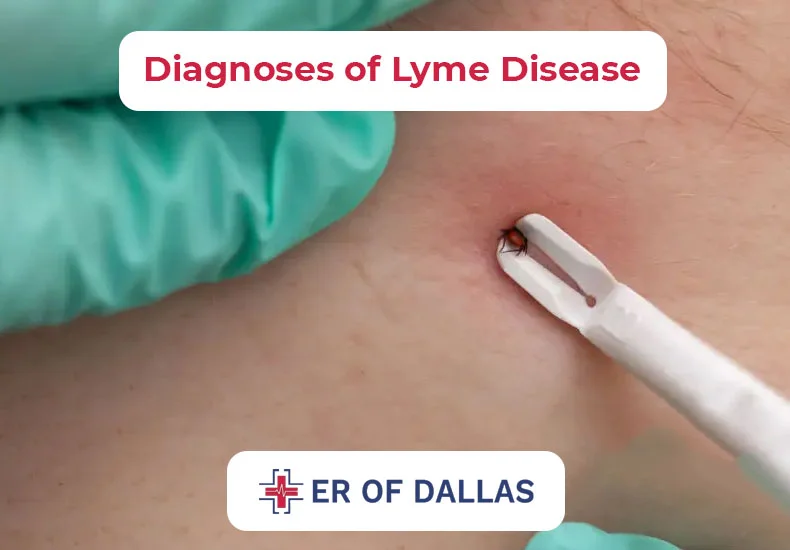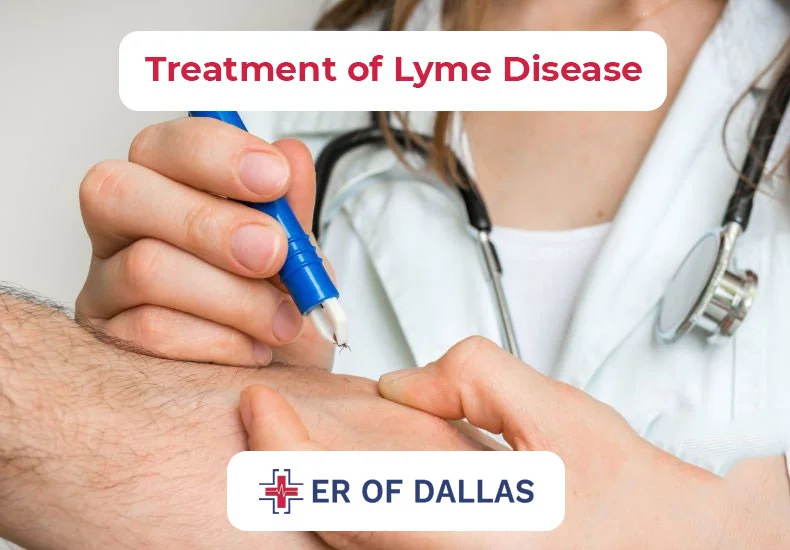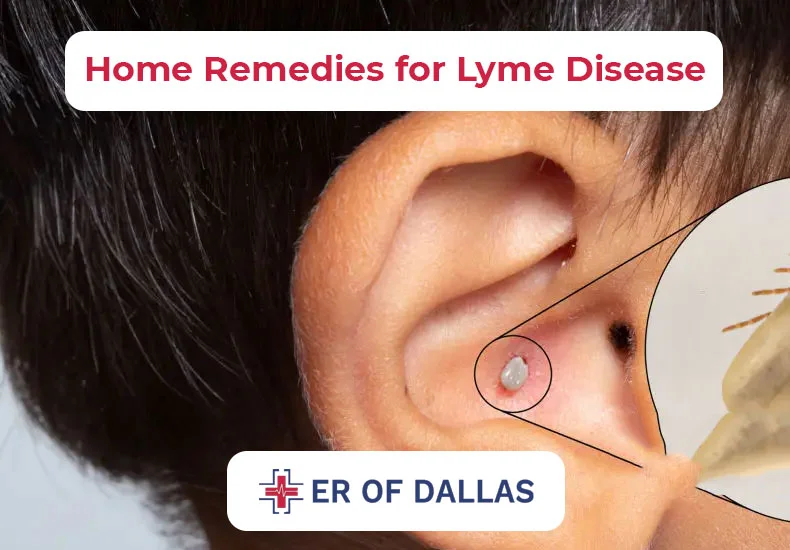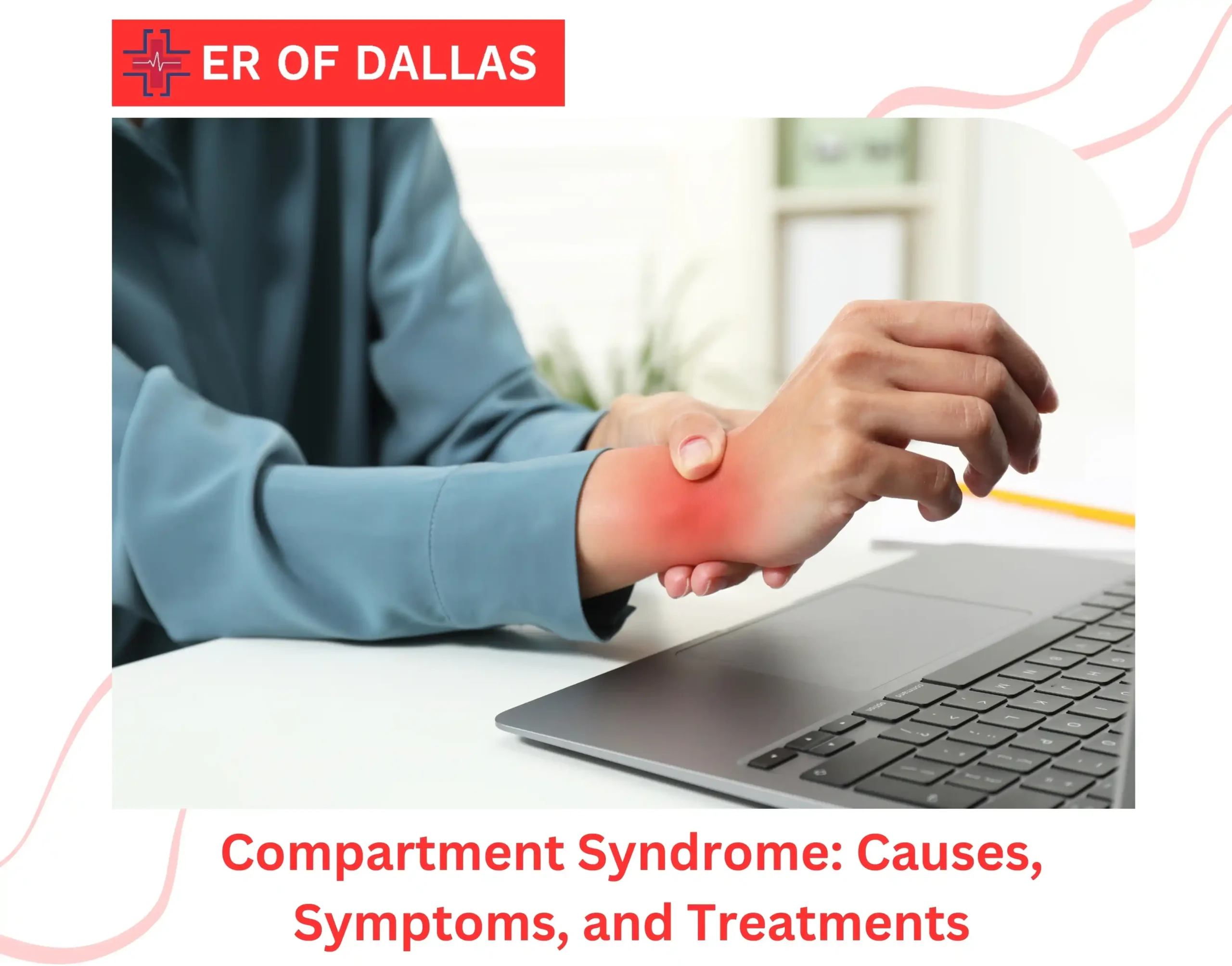In the complex field of infectious diseases, Lyme disease is a notable and often misunderstood sickness. As more cases are recorded globally, Lyme disease a tick-borne illness caused by the bacteria Borrelia burgdorferi is becoming a greater public health problem. By providing a comprehensive and understandable analysis of the condition’s epidemiology, symptoms, diagnosis, available therapies, and overall impacts on affected individuals and communities, this blog aims to better inform readers about this illness. Using a top-down approach, this overview seeks to give readers the basic understanding needed to understand the complexities of Lyme disease and to encourage intelligent discussions regarding treatment and prevention.
What is Lyme Disease?
If a deer tick, sometimes referred to as a black-legged tick, bites you, you could become infected with the bacteria known as Borrelia burgdorferi, which causes Lyme disease. Neither wood ticks nor common “dog ticks” are carriers of the disease.

The first reports of juvenile rheumatoid arthritis in 1975 affected many children in Lyme, Connecticut, and two neighboring communities. This led to the discovery of Lyme disease, also known as borreliosis. Researchers found that bites from infected deer ticks were the source of the arthritis outbreak.
What Are The Stages (phases) of Lyme Disease?
Phases or stages of Lyme disease can overlap and result in symptoms affecting the skin, joints, heart, or brain system. These phases consist of:
- Weeks one through four of early localized Lyme illness.
- Lyme disease that spreads early (months one through four).
- Late Lyme illness, late persistent Lyme disease, or simply late Lyme disease (four months or even years later).
Early Lyme Disease
A rash known as erythema migrans typically develops 3–30 days after the virus first manifests itself.
In 70–80% of cases of Lyme disease, the rash appears, and it:
- It usually starts at the site of the tick bite, though it can appear elsewhere as the bacteria spread.
- It usually starts as a small red area that grows over a few days to a diameter of 12 inches, or about 30 centimeters.
- It may lose its color in the center, giving it a bull’s-eye appearance. It is not painful or itchy, but it may feel warm to the touch.
- The rash may or may not show, depending on the skin tone of the affected person.
Later Lyme Disease
It may take months for additional symptoms to appear following a tick bite. Among them are:
- Lyme disease headaches
- Stiff neck
- More rashes
- Arthritis and Lyme disease joint pain; muscular, tendon, and bone discomfort; facial palsy—a lack of tone in one or both sides of the face
- Nerve discomfort
- Palpitations, tingling,g or numbness in the hands or feet, or shooting pains
Without medical intervention, these symptoms might disappear in a few weeks or months. On the other hand, some people experience long-lasting symptoms from chronic Lyme disease.
If the condition is left untreated, over 60% of patients experience repeated bouts of severe swelling associated with arthritis, particularly in the big joints.
How Common Is Lyme Disease?
The U.S. Centers for Disease Control and Prevention (CDC) receives reports of around 30,000 cases of Lyme disease in the country each year. However, some diagnosed instances remain unreported.

Unusual Symptoms of Lyme Disease
Individuals who have Lyme disease could respond to it differently. The degree of symptoms can vary.

Symptoms of Lyme disease might overlap even though the illness is typically classified into three stages: early localized, early disseminated, and late disseminated. Additionally, some patients may manifest at a later stage of their illness without exhibiting any early warning signs.
- Erythema migraines are a type of reddish rash or skin condition (EM). One week to four weeks after the tick bite, a tiny red patch at the site of the bite marks the beginning of the rash. Over a few days or weeks, the spot enlarges to develop an oval, triangular, or round rash. The rash resembles a bull’s eye because it has a distinct central area surrounded by a red ring. The size of the rash might vary, spanning from the size of a dime to the whole width of the person’s back. Multiple EM rashes (lesions) may develop at various locations on your body as the infection spreads.
- High temperature.
- Ache.
- Rigid neck.
- Aches in the joints and body.
- Tired.
- Enlarged lymph nodes (enlarged glands).
Untreated late Lyme disease can present with any of the following signs and symptoms months to a year after infection:
- Instances of swollen joints that keep happening (arthritis). Usually, this affects the knee and other major joints.
- Confusion is referred to as “brain fog.” This is a type of brain injury known as encephalopathy.
- Damage to nerves throughout the body, encompassing the muscles, organs, and skin (polyneuropathy).
The following are possible indicators and symptoms of the early disseminated stage, or second stage, of Lyme disease:
- Several rash spots.
- Facial muscular paralysis (Bell’s palsy).
- Heart block, or a disruption in the heart’s electrical circuitry.
- Areas affected by altered emotions or numbness (neuropathy).
Signs of Lyme Disease in Kids
The symptoms of Lyme disease in children are typically the same as those in adults.
Typically, they encounter:
- Exhaustion
- Aches in the joints and muscles
- Fever
- Flu-like symptoms
These signs may appear months or years after the infection, or they may appear shortly after.
Your youngster may exhibit some psychological signs. A 2019 analysis found that some parents of children with Lyme disease reported the following psychological problems in their children:
- Rage or hostility
- Mood swings
- Dreams related to depression
Consult our pediatrician at the ER of Dallas if these symptoms appear in your child. Also, if they are acting strangely and are unable to articulate the cause or the emotions they are experiencing. Lyme disease is one of the numerous illnesses that could be causing these changes in behavior.
Diagnoses of Lyme Disease
Anyone experiencing a rash that might have been caused by tick exposure must get medical help right once. Be ready to describe the probable exposure. This could be related to say a recent trek in a region where ticks are prevalent.
After removing a tick, one should photograph it and identify the species. It is important to note that Lyme disease patients who do not obtain treatment on time may develop more serious symptoms later on. These may show up years later.

When antibodies are present, some weeks following the first infection, blood tests are most accurate. A medical practitioner may request the following tests:
- The B. burgdorferi antibody assay, or ELISA, is used to find antibodies against the pathogen.
- An ELISA test that is positive is confirmed using a western blot. It looks for antibodies against particular proteins found in B. burgdorferi.
- People who have persistent symptoms of Lyme arthritis or nervous system disorders are evaluated using a polymerase chain reaction (PCR)Trusted Source. Joint fluid or cerebrospinal fluid (CSF) is used for the procedure. Because PCR testing on CSF is not very sensitive, it is not usually advised for the diagnosis of Lyme disease. The diagnosis is not ruled out by a negative test. In contrast, if joint fluid is tested before antibiotic therapy, the majority of patients will have positive PCR results.
Treatment of Lyme Disease
Early treatment is ideal for Lyme illness. A straightforward 10-14-day course of oral antibiotics is the treatment for early localized disease, which aims to eradicate the infection.

The following drugs are used to treat Lyme disease:
- Amoxicillin and cefuroxime are medications used to treat nursing mothers.
- Cefuroxime, doxycycline, or amoxicillin are the first-line medications for both adults and children.
Intravenous (IV) antibiotics are used for some kinds of Lyme disease, notably those with cardiac or central nervous system (CNS) involvement.
Healthcare providers will usually go to an oral regimen to complete the course of treatment after improvement. Typically, the entire course of treatment lasts between 14 and 28 days. Lyme disease Oral antibiotics are used to treat, a late-stage Lyme disease symptom that can appear in certain individuals, for 28 days.
Is There a Vaccine For Lyme Disease?
Left untreated, it may attack the joints, heart, and nervous system with potentially long-lasting impacts, including arthritis, heart palpitations, dizziness, or shooting pains. Though the threat has grown and become more well-known, there are currently no vaccines for humans, although there are three for dogs.
What Kind of Doctors Treat Lyme Disease?
You may get a Lyme disease test from a Lyme disease specialist. That does not, however, imply that having your podiatrist or dermatologist request the diagnostic tests is a smart idea. Many people only seek a Lyme diagnosis and treatment by visiting their family doctor or primary care physician.
A doctor with extensive expertise treating patients with Lyme disease is known as an LLMD because of their familiarity with the wide range of symptoms, co-infections, and complications that can arise from the disease at different stages. Many patients also find LLMDs to be more understanding and understanding of their experiences because of their knowledge and skill, particularly if they’re having trouble receiving an appropriate diagnosis from another doctor.
- Despite the negative findings of your Lyme disease test, you continue to experience symptoms.
- Even though you have previously had treatment for Lyme disease, the persistence of your symptoms may be a sign of chronic Lyme disease.
- Your symptoms haven’t disappeared despite receiving treatment for common misdiagnoses of Lyme disease, such as rheumatoid arthritis or chronic fatigue syndrome.
- Lyme disease, chronic Lyme disease, and Post-Treatment Lyme Disease Syndrome are not accepted diagnoses by your doctor.
Patients who do not fit into any of the aforementioned categories could nevertheless feel more comfortable leaving their care in the hands of an LLMD who is knowledgeable about the different manifestations of Lyme and other tick-borne illnesses.
Transmission of Lyme Disease
Any area of your body can become infected with B. burgdorferi-infected ticks. They are more frequently discovered in places of the body that are difficult to notice, like the groin, armpits, and scalp.
For the bacteria to spread, the infected tick has to remain connected to your body for a minimum of 36 hours.
The majority of Lyme disease sufferers were bitten by nymphs or young ticks. Seeing these little ticks is quite challenging. In the spring and summer, they eat. Although they are easier to spot and can be removed before spreading the bacterium, adult ticks are also carriers of the infection.
There is no proof that water, food, or the air may spread Lyme disease. Furthermore, there is no proof that it may be spread via physical contact, kissing, or sexual activity.
Is Person-to-Person Transmission Possible For Lyme Disease?
There isn’t any reliable scientific proof that sexual contact spreads Lyme disease. Published research on animals (Moody 1991; Woodrum 1999) refutes the idea of sexual transmission, and the biology of the spirochete that causes Lyme disease is incompatible with this mode of exposure (Porcella 2001). No proof kissing, caressing, or having sex with someone who has Lyme disease spreads the illness from one person to another. Lyme disease pregnancy treatment can result in placental infection. Although uncommon, spread from mother to fetus is conceivable.
Lyme Disease Pregnancy and Breastfeeding
A few small studies have linked Lyme disease during pregnancy to fetal mortality or developmental problems. It will take more investigation to verify this.
There aren’t any credible reports of transmission linked to nursing. Nevertheless, a doctor may advise against breastfeeding while receiving care. Pregnant Lyme disease patients need a different kind of medication.
Home Remedies for Lyme Disease
Many individuals turn to natural remedies as a form of treatment for Lyme disease. Natural remedies are seen as complementary therapies, to be used in addition to conventional medications or treatments, rather than as alternatives or replacements for medical care.

Essential Oils for Chronic Lyme
Many essential oils are believed to possess antibacterial qualities, which is why some long-term Lyme disease patients have turned to essential oils to help them manage their symptoms.
In human participants’ lab tests, it was discovered that cinnamon bark, clove buds, citronella, wintergreen, and oregano had significant activity against B. burgdorferi—even more potent than daptomycin, the “gold standard” antibiotic that is frequently administered to Lyme disease patients.
These results imply that essential oils might help treat chronic Lyme disease, but more studies are needed to confirm these advantages in human patients. When used properly, the majority of essential oils are harmless and don’t have any harmful side effects. However, it’s imperative to use them with prudence. Some of them should be diluted properly to prevent skin irritation and shouldn’t be taken internally.
Using Herbs to Treat Lyme Disease
Herbs have been utilized for thousands of years in medicine. When medications are unable to completely relieve their Lyme disease symptoms, many people resort to natural therapies.
According to one study, using the antibiotic doxycycline with the Chinese skullcap’s active component, baicalein can have significant therapeutic effects. Even more promising, a 2020 lab investigation discovered that seven herbal remedies had anti-B. burgdorferi (Lyme bacteria) action when contrasted with the antibiotics cefuroxime and doxycycline:
- Synanolenta Cryptolepis
- Black walnut, or Juglans nigra
- Cistus incanus
- Japanese knotweed, Polygonum cuspidatum
- A annua, sometimes known as sweet wormwood
- Uncaria tomentosa: the paw of a cat
- Chinese skullcap, Scutellaria baicalensis
The antibacterial characteristics of these plants show promise, but further studies are needed to confirm their usefulness against Lyme disease in humans.
Chelation Therapy for Lyme Disease
Some people believe Lyme disease symptoms are linked to heavy metal toxicity from materials like lead or mercury. Chelation therapy is a method of removing heavy metals from the bloodstream.
It’s done using a type of medication called a chelator or chelating agent. This medication binds to metals in the bloodstream, collecting them into a compound that can be processed by your kidneys and released in urine.
Chelation therapy is an effective treatment for a buildup of heavy metals. But there’s no evidence that heavy metals contribute to Lyme disease, and chelation therapy won’t treat the underlying infection.
Other Natural Treatments For Lyme Disease
The treatments discussed above are only some of the natural treatments that claim to treat Lyme disease. According to a 2015 study looking at the alternative treatments found during an Internet search, other natural treatments people use for Lyme disease include:
- Saunas and steam rooms
- Ultraviolet light
- Photon therapy
- Electromagnetic frequency treatments
- Magnets
- Urotherapy (urine ingestion)
- Enemas
- Bee venom
The investigators noted that there’s no research backing up these treatments, any many don’t have a logical rationale behind them.
Lyme Disease Natural Treatment Safety
If you decide to explore natural treatments for Lyme disease, talk to your doctor about the risks beforehand. Natural treatments, just like traditional treatments, can still be toxic or dangerous. However, in combination with medical treatment, a complementary approach might improve health.
For example, a product called bismacine contains an injectable form of bismuth. This is a type of metal that’s a common ingredient in some digestive aids. But bismacine contains a higher dose of bismuth that’s injectable. Injecting a high dose of bismuth can cause bismuth poisoning, which can lead to heart and kidney failure.
Other natural treatments may interact with other medications or supplements you take. Your doctor can help you confirm whether any medications you currently take will interact with the treatment you’re interested in trying.
Lyme Disease Death Rate
According to recent estimates derived from alternative techniques, there may be 476,000 cases of Lyme disease in the US annually. surveillance information.
FAQs
Q: Can You Get Lyme Disease Twice?
It is possible to contract Lyme disease more than once, though, as occasionally the immune system may not create enough antibodies to guard against the bacterium fully. Remembering that Lyme disease might recur even if a patient adheres to a suitable treatment plan is crucial.
Q: Why Do So Many Celebrities Have Lyme Disease?
Some of our favorite celebrities, sports heroes, political figures, and people in the public eye that we look up to will inevitably have Lyme disease since the chances of them coming into contact with an infectious tick are higher for those who enjoy being outside in the spring and summer.
Q; Does The Lyme Disease Vaccine Prevent Ticks?
This vaccination is done initially with one injection followed by a booster vaccine in 3-4 weeks. After that, an injection is given every year to protect your animal. However, it only protects against Lyme Disease, and not any other tick-borne diseases.
Q: Do Mosquitoes Carry Lyme Disease?
There is no proof that mosquitoes may transmit the Lyme disease bacterium in the quantity and condition necessary for an illness, even though the germs have been discovered in their salivary glands.
Q: Can Lyme Disease be Sexually Transmitted?
It is not possible for someone to contract Lyme disease by touching, kissing, or sexual contact with an infected person. Pregnancy-related untreated Lyme disease can result in placental infection. Although uncommon, spread from mother to fetus is conceivable.
Q: Can Lyme Disease Cause Seizures?
Seizures may also be brought on by Lyme illness, but the timing of the seizures was associated with the build-up of normeperidine. This primary meperidine metabolite stimulates the central nervous system.
Summary
In summary, for individuals navigating the complexities of Lyme disease, gaining a thorough understanding of the illness is essential. This top-down summary has clarified Lyme disease’s causes, symptoms, and available treatments. But it’s critical to identify Lyme illness early through testing. People who are worried about possible exposure or who are exhibiting symptoms ought to aggressively pursue Lyme disease testing in my area in order to guarantee a timely diagnosis. For an accurate assessment and customized treatment programs, it is equally important to get in touch with our skilled medical professionals at the ER of Dallas – Emergency Room who specialize in Lyme illness, such as Lyme disease doctors near me. People can improve their ability to manage Lyme disease by being proactive, and knowledgeable, and using local testing facilities and specialized physicians. This highlights the significance of prompt intervention for the best possible health results.











